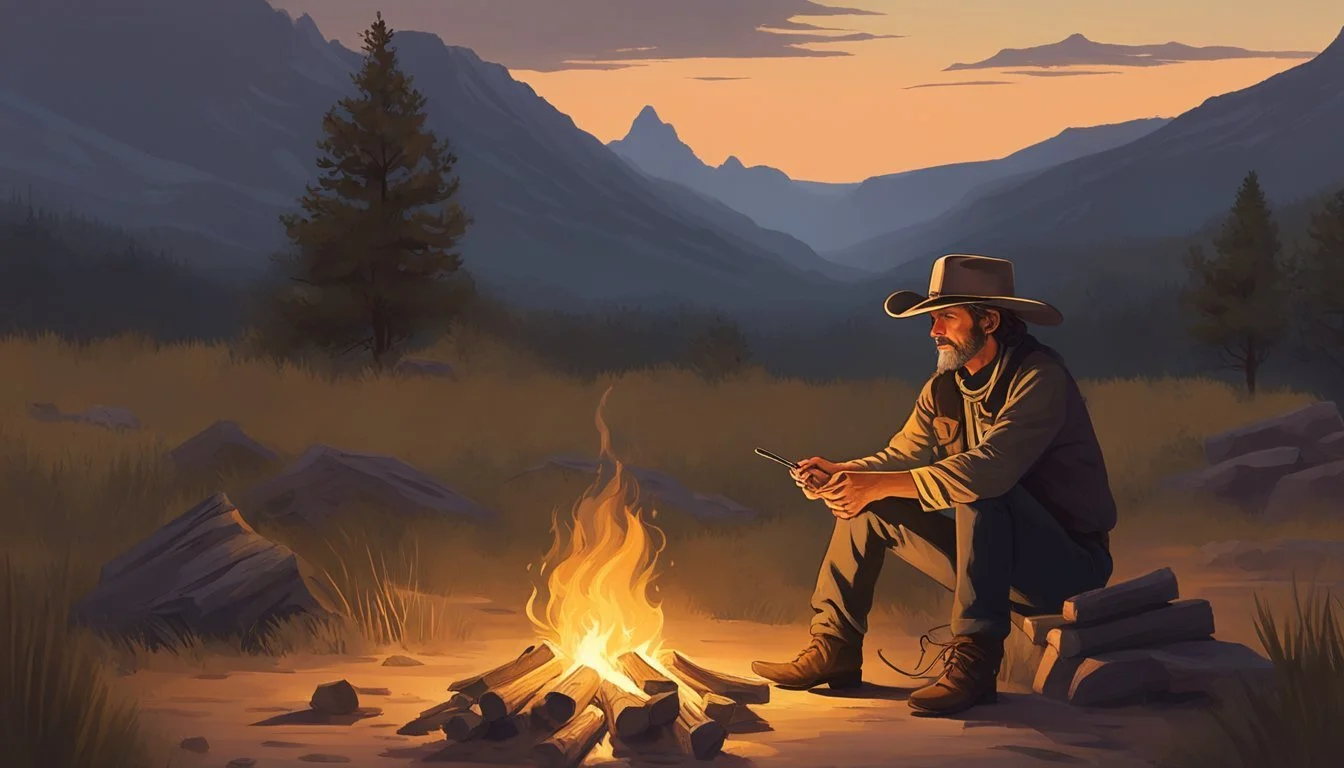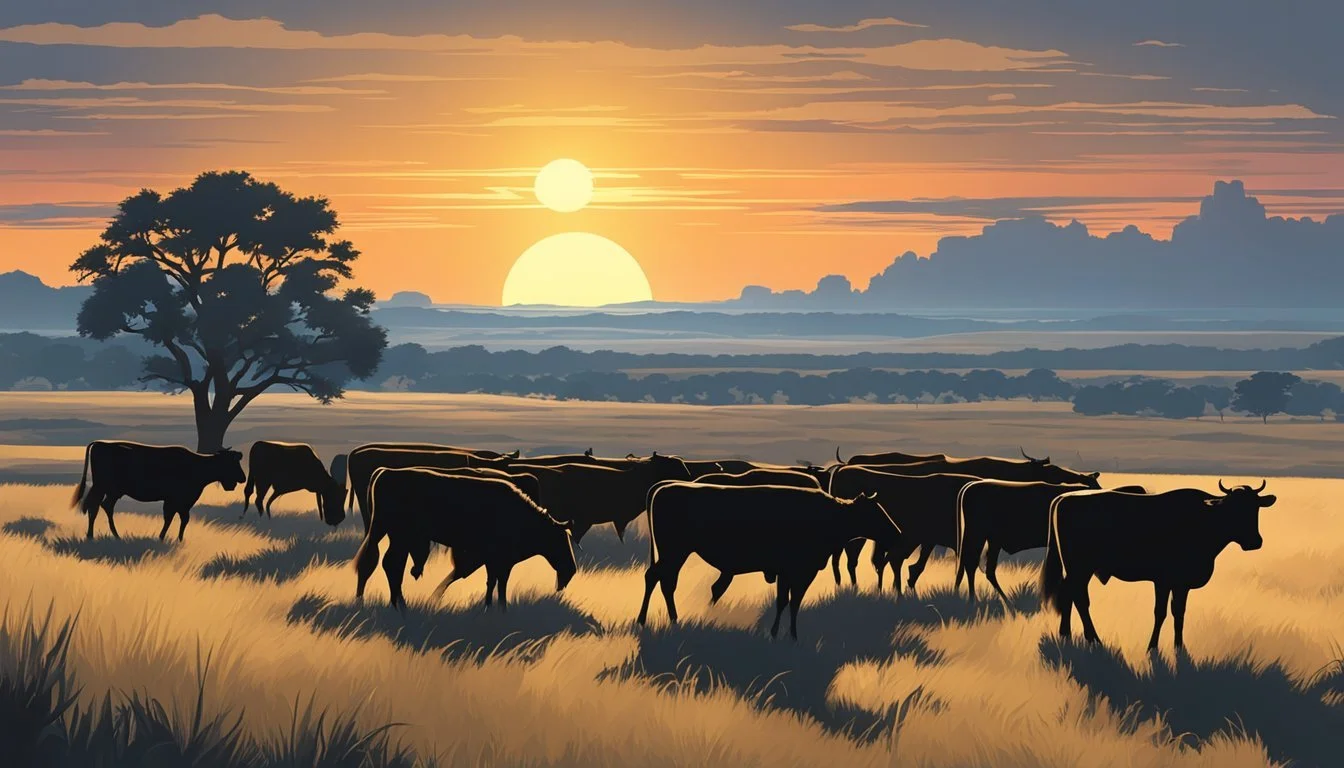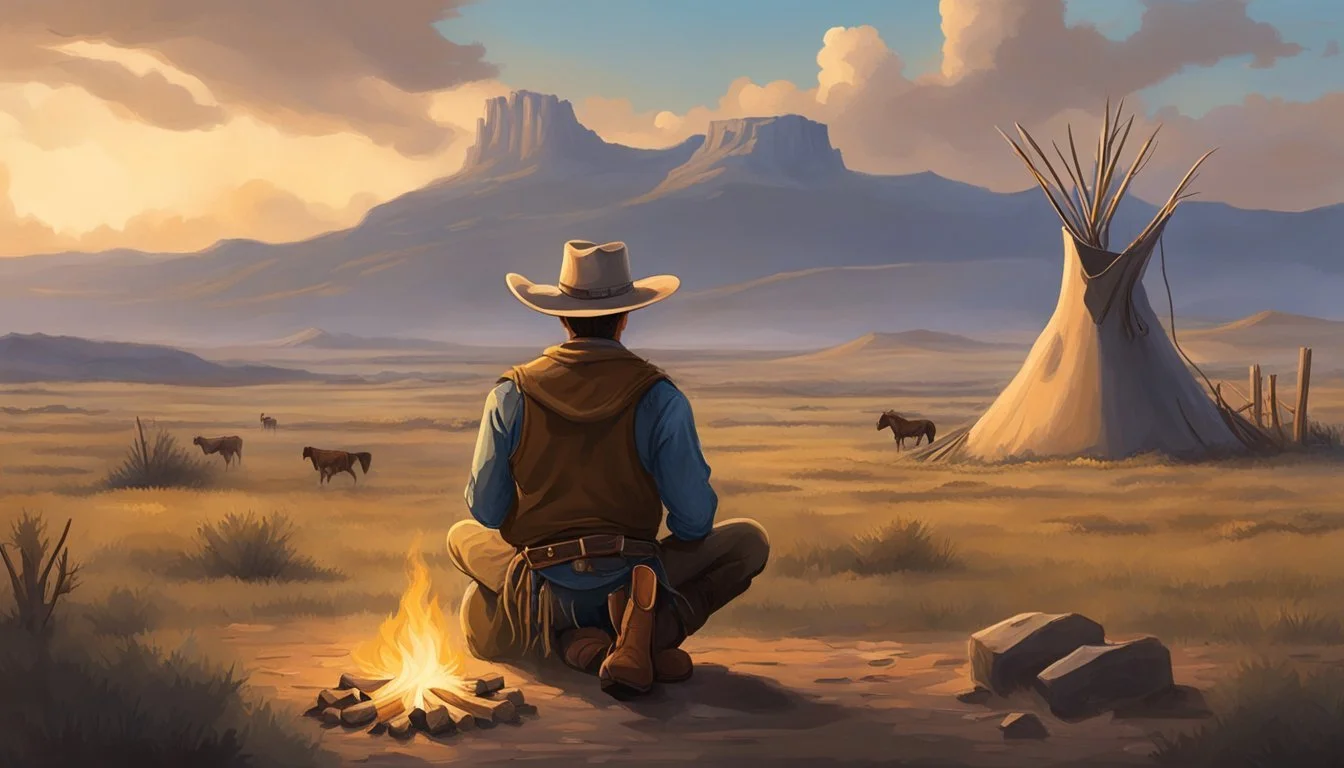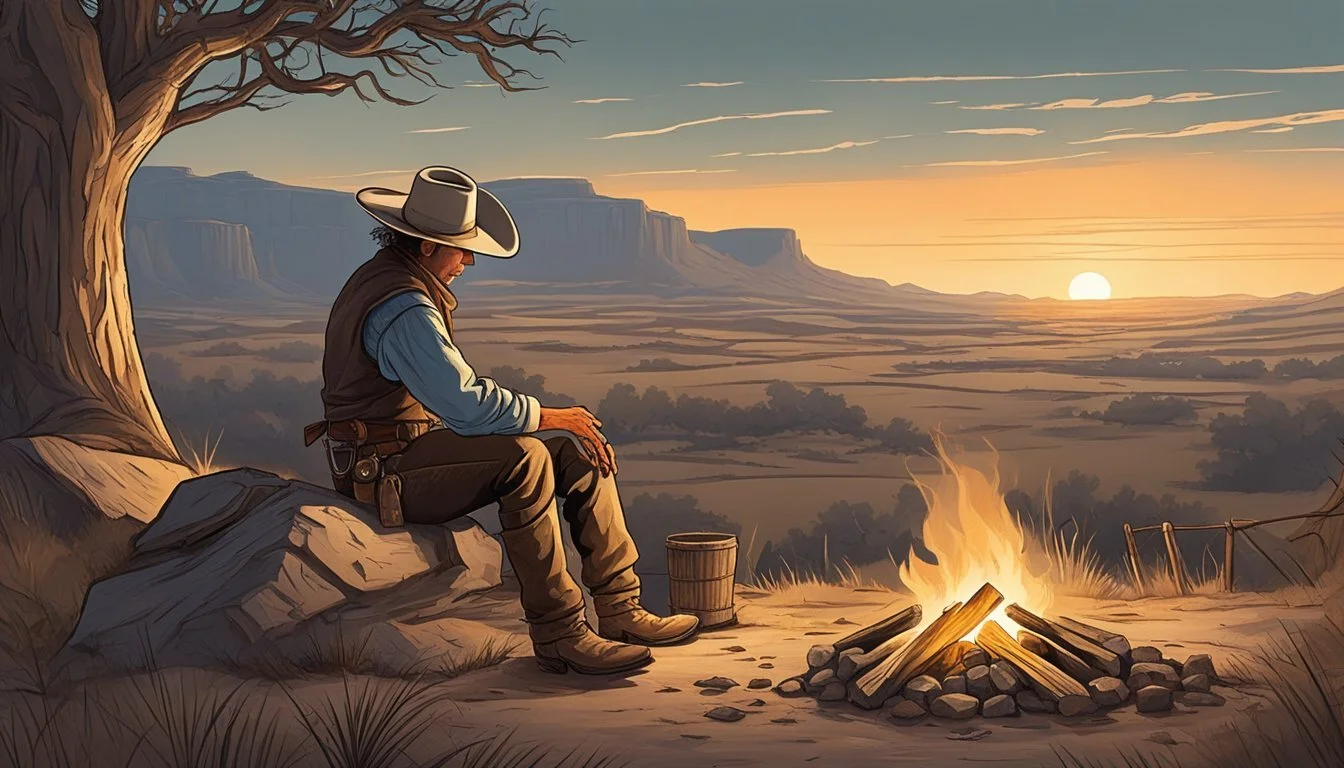The Texas Cowboy's Guide to Mastering the Art of Storytelling and Preserving Oral History
The Texas cowboy is an emblem of American West heritage, a figure that has come to symbolize the rugged, bold spirit of not just a region, but an era. Rooted deeply in the vast landscape of Texas, cowboy culture extends beyond cattle herding and ranching into a rich tapestry of storytelling and oral history. These traditions preserve the essence of day-to-day cowboy life, mapping a cultural legacy that is as enduring as it is dynamic.
Through the medium of storytelling, cowboys have historically passed down experiences, lessons, and legends, from the early days of the vaqueros, Spanish cowhands who were expert in their management of cattle and horses, to the current celebrations of cowboy poetry. The oral traditions of Texas cowboys are a testament to their skill in preserving history not only through written records but through the spoken word, resonating across generations.
Cowboy poetry gatherings in the state, like those held in West Texas, epitomize the celebration of this oral heritage. They provide a platform for both old and new narratives, immortalizing the trials and triumphs of ranching life. These gatherings are not mere entertainments, but a vital organ of the cowboy culture, safeguarding the customs, ethos, and stories of the American West for future custodians of the Texas legacy.
The Roots of Cowboy Legacy
Exploring the roots of the cowboy legacy reveals a storied past that transitions from the early vaqueros to the iconic cowboys of the American West, deeply affected by historical events such as the Civil War.
Evolution from Vaqueros to Cowboys
The precursors to the American cowboy, the vaqueros of Spanish Mexico, were adept cattle herders who mastered the equestrian arts. Their horsemanship and ranching techniques, developed as early as the 16th century, laid the groundwork for the cowboy culture in Texas. When Texas became part of the United States, these skills were absorbed and adapted by the American settlers, molding the vaquero tradition into the cowboy identity known today.
The Impact of the Civil War on Cowboy Culture
The conclusion of the Civil War in 1865 had a profound effect on the landscape of the American West. With the return of Confederate soldiers to a devastated Southern economy, many gravitated toward the burgeoning cattle industry. These men, often displaced by the war, played a significant role in expanding the cowboy way of life as they drove large herds of cattle across the plains to railheads in the North, intertwining the cowboy identity with American history.
Cattle Kingdom: Rise and Fall
The cattle kingdom experienced a meteoric rise fueled by trail drives, with towns like Abilene, Kansas, becoming economic hubs. However, its decline was hastened by overgrazing, range wars, and the invention of barbed wire.
The Great Cattle Drives
In the decades following the Civil War, the great cattle drives formed the backbone of the burgeoning cattle industry. Ranchers saw an opportunity to meet the booming demand for beef in the urban North. They began organizing roundups of semi-wild longhorn cattle that roamed the open range of West Texas. The drives involved moving vast herds of livestock over hundreds of miles, from Texas northward, to reach railroad heads for shipment to meatpackers.
Key Players: Cowboys and ranchers from Texas
Main Livestock: Texas longhorns, known for their resilience and adaptability
Destinations: Railheads in cities like Abilene and Dodge City in Kansas
Chisholm Trail and Other Routes
The Chisholm Trail, one of the most famous cattle trails, was instrumental in the cattle drive era. It stretched from ranches in Texas through Oklahoma and on to Kansas. The trail was blazed by Jesse Chisholm in the late 1860s for wagon travel and soon was utilized by cattle drovers moving herds north. Other key routes included the Goodnight-Loving Trail, which extended into Colorado and Wyoming, and the Western Trail that reached up into Nebraska.
Chisholm Trail: Over 5 million cattle traveled this route during its use.
Other Routes: Western Trail, Goodnight-Loving Trail, and lesser-known feeder routes.
The Demise of the Open Range
The fall of the cattle kingdom began in the late 1880s when the open range era ended. Factors contributing to this demise included:
Barbed Wire: Patented in 1874, it allowed ranchers to fence off land, effectively ending the era of open-range ranching.
Severe Winters: Harsh winters in 1886 and 1887 led to large losses of cattle, devastating the economics of the cattle drives.
Market Fluctuations: As supply sometimes outpaced demand, the value of cattle could fluctuate wildly, leading to economic instability.
Settlement Expansion: The constant westward growth of farming settlements reduced the grazing land available for cattle and led to conflicts known as 'range wars'.
Each of these elements played a part in halting the cattle drives and transitioning the industry towards a more sedentary, ranch-based methodology which dramatically altered the Western economy and lifestyle.
Cowboy Life and Work
Cowboys embody the hardworking spirit of Texas, with their lives revolving around ranch duties, rodeo competitions, and distinct cowboy culture and attire.
The Day-to-Day of Ranch Hands
Ranch hands begin their days early, often before sunrise, to take advantage of cooler weather and to perform their duties efficiently. These cowboys oversee herding and branding tasks, manage livestock health, and maintain the ranch’s infrastructure. They are skilled in navigating diverse terrains and weather, and their work is demanding, both physically and mentally.
Daily Responsibilities:
Monitor and maintain livestock health
Repair fences, gates, and other ranch fixtures
Herding cattle to different grazing areas
Assist with cattle drives, which may span multiple days
The Rodeo Circuit
Cowboys on the rodeo circuit hone their skills such as riding, roping, and wrestling in competitive arenas. Rodeos provide an opportunity for cowboys to demonstrate their abilities, gain prestige, and sometimes secure additional income. Cowboys who excel may become local legends, and some circuits feature competitions like bronc riding and steer roping.
Key Rodeo Events:
Bronc riding
Calf roping
Bull riding
Barrel racing
Cowboy Gear and Attire
The cowboy attire is practical and iconic, with the cowboy hat being the most recognizable piece. Designed to protect from the sun and rain, it's both a tool and a symbol. Durable clothing, such as denim jeans and wrangler shirts, is worn for protection against brush and injury. Boots with high tops safeguard against snake bites and thorns, while spurs provide precision in guiding horses.
Cowboy Hat: Wide-brimmed for weather protection
Boots: High tops with heels designed for riding
Chaps: Leather leg coverings for bush protection
Gloves: Heavy-duty for handling ropes and cattle
Cultural Influence and Mythmaking
The Texas cowboy's influence permeates through Western films and literature, shaping popular myths and cultural narratives. This section examines how these forms of media have solidified the cowboy archetype and preserved cowboy folklore.
Western Films and Cowboy Archetype
Western films have played a pivotal role in etching the cowboy's place in American cultural identity. They often uphold the image of cowboys as stoic heroes, creating a powerful myth of rugged individualism. These heroes, clad in iconic attire, interact with wide-ranging elements of the West — from broncos to wranglers, and often against the backdrop of Native American territories.
Key Elements in Western Films:
Cowboys: Portrayed as fearless and honorable
Native Americans: Often depicted from a narrow, historical perspective
Wildlife: Broncos frequently appear as a vital component of cowboy life
Scenery: Vast Texan landscapes embody the unfettered frontier
Universities, including the University of Texas, contribute to the study of this genre, dissecting its impact on societal perceptions of cowboy culture.
Literature and Cowboy Folklore
Cowboy folklore, recounted in literature, is a rich repository of oral history and storytelling. Traditional themes often revolve around life on the range, the challenges faced by early settlers, and the legacy of the cowboys as valiant overseers of a relentless terrain. Literary works delve into various aspects of cowboy life, from the myths that glorify their existence to the hard truths of their daily toils.
Cowboy Myths in Literature:
Bravery and independence
Cowboy's camaraderie
Conflict and resolution with Native Americans
By examining these narratives, literature transcends entertainment, ensuring the preservation and continued dissemination of cowboy culture.
Historical Documentation and Preservation
When it comes to chronicling the Texas cowboy's legacy, thorough historical documentation and preservation of their narratives are pivotal. Utilizing oral history techniques enhances the understanding of the cowboy's cultural impact which is deeply ingrained in the identity of Texas, particularly the Texas Panhandle.
Collecting Oral Histories of the Cowboy Era
The Texas Panhandle is rich in cowboy history, a testament to the settlers who first imprinted their lives on the land. Oral histories collected from the aging cowboy population offer a reservoir of cultural insight and firsthand experiences. David Dary's works, which are often cited by the University of Oklahoma Press, provide a framework for documenting the lived realities of these iconic figures. A combination of diaries, journals, and recorded interviews are essential in piecing together the historical tapestry, ensuring that their stories of resilience and daily life are captured authentically and respectfully.
Strategies for Collection:
Conduct interviews with remaining cowboys and their descendants.
Gather and digitize existing diaries and journals.
Partner with local historical societies and the University of Oklahoma Press for archival support.
Academic Research and Publications
The role of academic research cannot be understated in the context of storytelling and oral history preservation. Peer-reviewed journals and publications validate the historical narratives and extend their reach to a broader audience, providing an academic lens to the cowboy culture. Scholarly work further serves to cross-verify the collected oral histories, ensuring that the storied past of the Texas cowboy is both preserved and studied with the scholarly rigor it deserves. This intersection of academia and storytelling not only educates but also honors the lives and contributions of these early settlers.
Academic Contributions:
Publish findings in history-focused journals and books.
Host symposiums and lectures at universities, with a focus on Texas and cowboy history.
Archive research digitally and in university libraries to ensure long-term accessibility.
Contemporary Cowboy Identity
The identity of the contemporary Texas cowboy is intricately linked to both traditional cultural values and modern challenges in ranching. Cowboys today embody resilience and adaptability in the face of economic pressures and societal evolution.
Modern Ranching Challenges
Economic Pressures: Cowboys today must navigate an increasingly global economy that affects the price and demand for livestock. Rising costs for feed, veterinary services, and equipment put financial strain on ranchers, compelling them to be resourceful and business-savvy.
Land Management: Modern ranchers contend with land use issues, balancing livestock needs with sustainable practices.
Environmental Concerns: Overgrazing and water use are critical issues that necessitate innovative solutions.
Wildlife Conservation: Coexistence with native species and restoration of natural habitats are part of responsible stewardship.
Adapting Traditions: The cowboy's role has expanded to encompass skills outside traditional ranching. They incorporate technology for herd tracking and leverage social media for market expansion, all while maintaining their cultural heritage and practices.
Cowboys in Today's Society
Cultural Ambassadors: Cowboys act as conduits of a storied past, embodying and sharing the vibrant heritage that has shaped North America. They preserve oral histories and serve as icons of an enduring cowboy culture.
Inclusive Identity: Today's cowboys come from diverse backgrounds, challenging historical stereotypes. They reflect a broader spectrum of society, including Native American traditions and the voices of those previously underrepresented in this narrative.
Community Role: They extend their influence as leaders and participants in local events, such as rodeos and parades, reinforcing their role as pillars in their communities.
Ranching Innovations: Cowboys incorporate modern techniques in their craft, ensuring the sustainability of ranching for future generations.
Genetics and Breeding: Advanced understanding of livestock genetics aids in breeding heartier animals.
Alternative Industries: Some ranchers diversify with agritourism, offering authentic ranch experiences to the public.
The Legacy of Notable Cowboys
The Texas cowboy is an iconic symbol of frontier legacy, embodying the rich narrative of trailblazing, cattle herding, and skillful horsemanship. Within this vibrant history, certain individuals stand out for their significant contributions and remarkable stories that continue to influence the art of storytelling and oral history preservation in the Lone Star State.
Famous Figures of the Old West
Ben Thompson: Known for his prowess with firearms, Ben Thompson left a mark as a lawman and gunfighter. His reputation for bravery is a staple in Texas folklore.
Charles Goodnight: Alongside Oliver Loving, he blazed the Goodnight-Loving Trail, crucial in cattle drives. Goodnight's initiatives also helped establish Texas Panhandle ranching infrastructures.
Jesse Chisholm: An influential trader of Cherokee descent, Jesse Chisholm's development of the Chisholm Trail was instrumental for cowboys driving cattle north to railheads, strengthening the link between Texas ranches and the broader market.
Contributions of Black and Native American Cowboys
Black Cowboys: Despite facing discrimination, Black cowboys played an essential role in Texas’ ranching history. Figures like the famous “Dusky Demon,” better known as Bass Reeves, who escaped slavery and became a legendary lawman serving in Indian Territory, exemplified the profound impact of Black cowmen.
Native American Influence: Native Americans, including the Cherokee and Comanche, brought their knowledge of the terrain and horse mastery to the cattle industry. Their skills in guiding herds through difficult passages greatly enhanced the cowboys' efficiency and were key to the successful drives along trails such as the one developed by Jesse Chisholm.
This section delves into the personal histories and cultural contributions of these cowboys, highlighting how their unique experiences and skills have become part of the enduring oral traditions in Texas.







